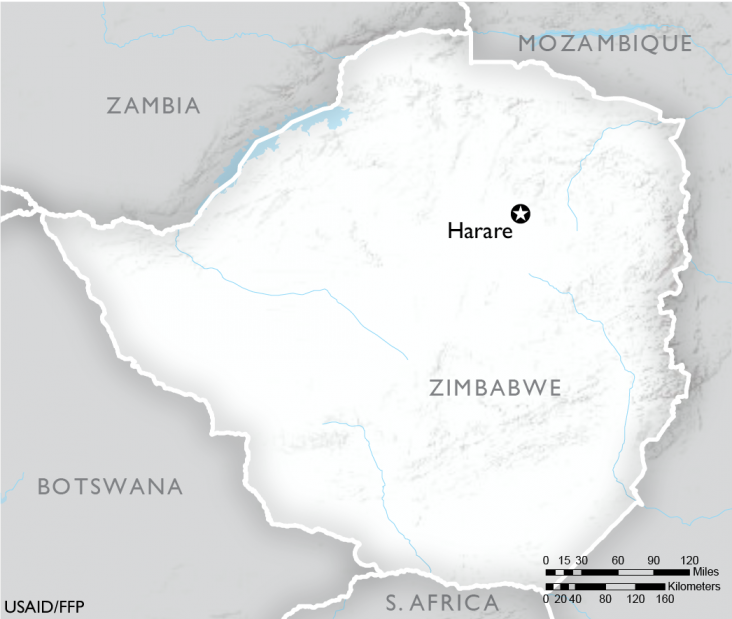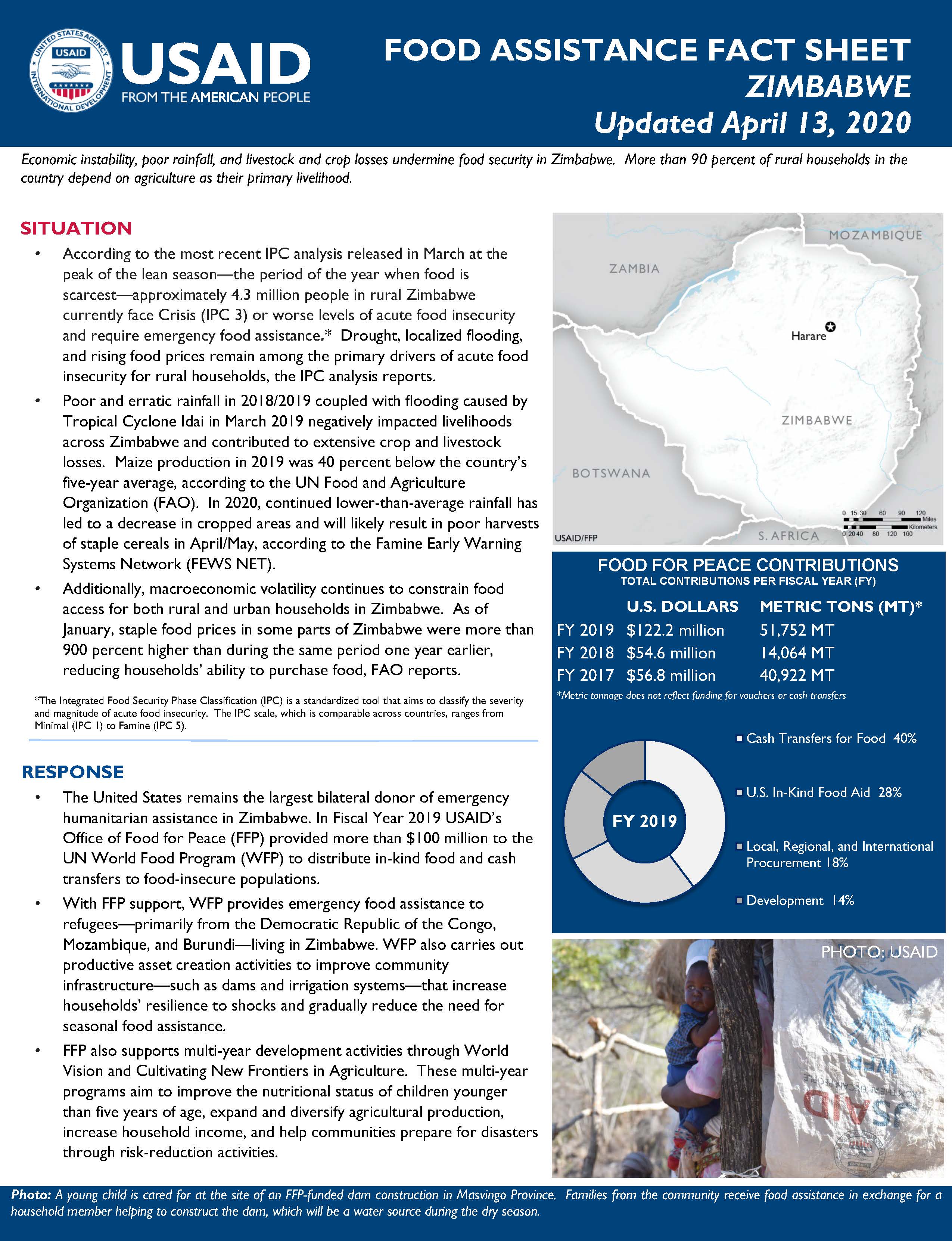Home » What We Do » Agriculture and Food Security » Food Assistance » Where We Work » Food Assistance Fact Sheet - Zimbabwe
- What We Do
- Agriculture and Food Security
- Democracy, Human Rights and Governance
- Economic Growth and Trade
- Education
- Environment and Global Climate Change
- Gender Equality and Women's Empowerment
- Global Health
- Humanitarian Assistance
- Transformation at USAID
- Water and Sanitation
- Working in Crises and Conflict
- U.S. Global Development Lab
Speeches Shim

April 13, 2020
Economic instability, poor rainfall, and livestock and crop losses undermine food security in Zimbabwe. More than 90 percent of rural households in the country depend on agriculture as their primary livelihood.
Situation
- According to the most recent IPC analysis released in March at the peak of the lean season—the period of the year when food is scarcest—approximately 4.3 million people in rural Zimbabwe currently face Crisis (IPC 3) or worse levels of acute food insecurity and require emergency food assistance.* Drought, localized flooding, and rising food prices remain among the primary drivers of acute food insecurity for rural households, the IPC analysis reports.
- Poor and erratic rainfall in 2018/2019 coupled with flooding caused by Tropical Cyclone Idai in March 2019 negatively impacted livelihoods across Zimbabwe and contributed to extensive crop and livestock losses. Maize production in 2019 was 40 percent below the country’s five-year average, according to the UN Food and Agriculture Organization (FAO). In 2020, continued lower-than-average rainfall has led to a decrease in cropped areas and will likely result in poor harvests of staple cereals in April/May, according to the Famine Early Warning Systems Network (FEWS NET).
- Additionally, macroeconomic volatility continues to constrain food access for both rural and urban households in Zimbabwe. As of January, staple food prices in some parts of Zimbabwe were more than 900 percent higher than during the same period one year earlier, reducing households’ ability to purchase food, FAO reports.
* The Integrated Food Security Phase Classification (IPC) is a standardized tool that aims to classify the severity and magnitude of food insecurity. The IPC scale, which is comparable across countries, ranges from Minimal (IPC 1) to Famine (IPC 5).
Food Assistance Fact Sheet - Zimbabwe ![]() (pdf - 313k)
(pdf - 313k)
Response
- The United States remains the largest bilateral donor of emergency humanitarian assistance in Zimbabwe. In Fiscal Year 2019 USAID’s Office of Food for Peace (FFP) provided more than $100 million to the UN World Food Program (WFP) to distribute in-kind food and cash transfers to food-insecure populations.
- With FFP support, WFP provides emergency food assistance to refugees—primarily from the Democratic Republic of the Congo, Mozambique, and Burundi—living in Zimbabwe. WFP also carries out productive asset creation activities to improve community infrastructure—such as dams and irrigation systems—that increase households’ resilience to shocks and gradually reduce the need for seasonal food assistance.
- FFP also supports multi-year development activities through World Vision and Cultivating New Frontiers in Agriculture. These multi-year programs aim to improve the nutritional status of children younger than five years of age, expand and diversify agricultural production, increase household income, and help communities prepare for disasters through risk-reduction activities.
Total Contributions:
| U.S. Dollars | Metric Tons | |
|---|---|---|
| Fiscal Year 2019 | $122.2 million | 51,752 MT |
| Fiscal Year 2018 | $54.6 million | 14,064 MT |
| Fiscal Year 2017 | $56.8 million | 40,922 |
* Metric tonnage does not reflect funding for vouchers or cash transfers.
Country-Specific Guidance
-
Zimbabwe Market and Food Security Analysis (multiple reports) - January 2020
- Fiscal Year 2013 Zimbabwe Country Specific Information


Comment
Make a general inquiry or suggest an improvement.